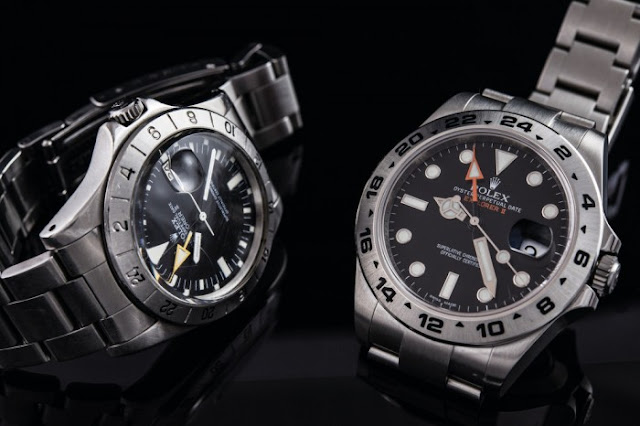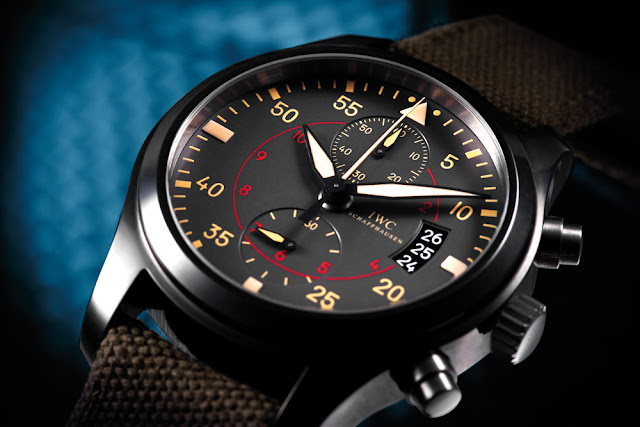7 Things Every Rolex Fan Should Know About The Explorer II
The Rolex Explorer has always been associated with outdoor adventure, thanks to the brand’s longstanding relationship with exploration. It was during the 1920s that Rolex immersed itself in producing watches that weren’t only visually appealing but could also prove its mettle against real-life conditions. The Explorer line is the very example of the brand’s continuous quest to redefine accuracy, durability, and reliability amongst its professional watches.
This constant pursuit for greatness has led the brand to elevate its collection of watches for professional use. The Rolex Explorer II is the product of Rolex’s unwavering commitment to improving its timepieces, ensuring that these tools can face even the harshest of outdoor situations.
Let’s check out why the Explorer II remains a legend amongst professional watches with these seven interesting facts about Rolex’s most sought-after timepiece for exploration.
The Explorer II’s oversized hands in blaze orange (also called Freccione or “big arrow” in Italian) also enhance time-telling, as the orange coating provides better visibility particularly in dark environments. Wearers of this timepiece will find this helpful when exposed to harsh environmental conditions.
The Explorer II may come across as a “bespoke” Rolex, if only for its ability to fit well in every gentleman’s wrist. The 40-millimetre case seems to be too big on the wrist but it actually sits well without looking too magnanimous when worn. The Oyster bracelet is incredibly well made and truly a picture of robustness, which makes this timepiece the tool to have when exposed to extreme outdoor conditions. The bracelet is complemented with the “Easylink” extension link, a feature unique to the brand, which enables the wearer to adjust the fit of the bracelet up to 5 millimetres. With these exceptional features, it is as if the Explorer II is made exclusively for the wearer.
The Rolex Explorer II shares the intrinsic character of the brand in making subtle yet striking changes in its lines over the years. The most notable change to the watch is its new movement – the in-house calibre 3187 – which powers up the timepiece at 28,800 beats per hour at 4 Hertz. Aside from the usual hour, minute, and seconds hands, it displays a 24-hour hand for a second time zone. This indeed is the perfect timepiece for those who want precision and reliability in a time-telling device.
This constant pursuit for greatness has led the brand to elevate its collection of watches for professional use. The Rolex Explorer II is the product of Rolex’s unwavering commitment to improving its timepieces, ensuring that these tools can face even the harshest of outdoor situations.
Let’s check out why the Explorer II remains a legend amongst professional watches with these seven interesting facts about Rolex’s most sought-after timepiece for exploration.
The Ultimate Outdoor Watch
While the Rolex Oyster Perpetual (used by Sir Edmund Hillary in summitting Mt. Everest in 1953) and the Rolex Deepsea are known for their reputation as adventure and professional diver’s watches, respectively, the Explorer II is undoubtedly in the extreme side of the spectrum. Launched in 1971 as a timepiece designed for cave and polar explorers, this watch was geared towards a niche market. The wearers of this watch were predominantly those who enjoy the wild and are out for exploration, such as scientists. True to its name, the Explorer II became the watch of choice of real-world explorers like French spelunker Jean Francois Pernette and Tyrolean mountaineering legend Reinhold Messner.The Rolex That Tells Time In A Grand Manner
The Rolex Explorer 2 does not only perform any timepiece’s core function – that is, to tell time – but does it outstandingly even in the most difficult of situations. Thanks to its 24-hour marked bezel with an extra hand on its dial, coupled with its power-saving capabilities, this timepiece could tell if it is day or night. This feature is especially useful for cave explorers who may find themselves spending longer hours or even days inside the darkness of a cave when caught in the middle of a blizzard or storm.The Explorer II’s oversized hands in blaze orange (also called Freccione or “big arrow” in Italian) also enhance time-telling, as the orange coating provides better visibility particularly in dark environments. Wearers of this timepiece will find this helpful when exposed to harsh environmental conditions.


Comments
Post a Comment